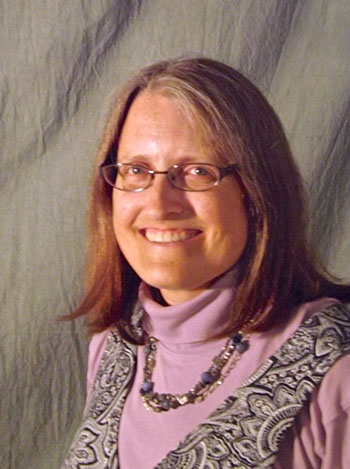NGSS in Action: Alison Hapka, High School Physics
Alison Hapka knows what active science learning can do for a classroom. For one thing, it makes a giant mess: everyone talking at once, papers and supplies scattered all over, and desks pointing every which way.
This is what it looks like in the science classes she teaches at Elkton High School. She’s leading an effort to bring this style of teaching to her school, and working as an executive board member for the Maryland Association of Science Teachers to help others learn to implement the Next Generation Science Standards effectively.
Linking Science With Life
Alison became interested in inquiry-based learning 10 years ago, at a residential training program on activity-based physics instruction. She found a reinvigorated approach to some of the same concepts in the Framework for K-12 Science Education and volunteered to weave them into her school’s curriculum. Later, she was invited to be on her states review committee for the Next Generation Science Standards and participated in its public reviews.
“It’s a 180 from how we look at what the students are doing, how we link science and learning to their life in general, how we connect where they’re beginning to where they need to end up,” says Alison.
The NGSS build on the way we naturally learn and apply that knowledge to our lives, Alison says.
Changes for the Classroom
For teachers, that means a shift from the way lessons have traditionally been designed to an approach that better motivates students to figure things out for themselves.
“You start from the skeleton of what you’ve done before, but change how it’s delivered,” Alison says. You’re providing all the pieces they need and setting them free to put together the puzzle. But the content is still the same.
“The disciplinary core idea is the ‘lesson,’ or the meat and potatoes of what’s being taught,” says Alison. “The science practices are how the kids digest learning and connect it to what they’ve done before. I post the practices around my classroom straight from the performance expectations, so students can see what they are and how they connect through the lessons.”
The Freedom to Fail
This reboot of traditional instructional design will take some getting used to, for students and teachers, as well as for education administrators.
"Administrators have to let teachers take risks and make mistakes,” Alison says. “The only way to get real rigor and depth is to try, revise, and try again.”
“You can’t give the kids the answers. They have to come to it themselves. Let them try a dead-end approach for a 45-minute experiment, because that teaches them just as much. They learn so much by making mistakes, so you have to give yourself permission to let the kids fail, and to let us fail.”
Helping students take a more active role in learning means investing in a curriculum that’s difficult to standardize on a large scale. It has to allow flexibility for students to progress at different paces, and assessment must focus on knowledge application rather than on scores and scantrons.
“It will look a lot different from the traditional classroom,” says Alison. “It’s going to be messy, and loud, and the end of the period might not look like the outcome written on the board. But administrators must be flexible and realize we’re doing the best thing for student learning, and we have to give space to let the teachers learn, too.”
Where to Start
Changing the way we’ve always done things is scary. The standards themselves can be overwhelming, and the idea of implementing them in entire school systems seems like a monumental task. But every improvement starts with a first step. And for the students and teachers she’s worked with, Alison has seen that the risk well worth the reward.
NGSS Classroom Activity

"It will look a lot different from the traditional classroom. It’s going to be messy and loud. But administrators must be flexible and realize we’re doing the best thing for student learning, and we have to give space to let the teachers learn, too."
Alison Hapka

